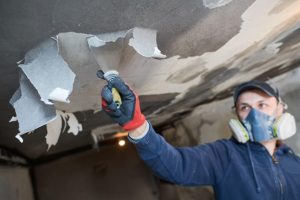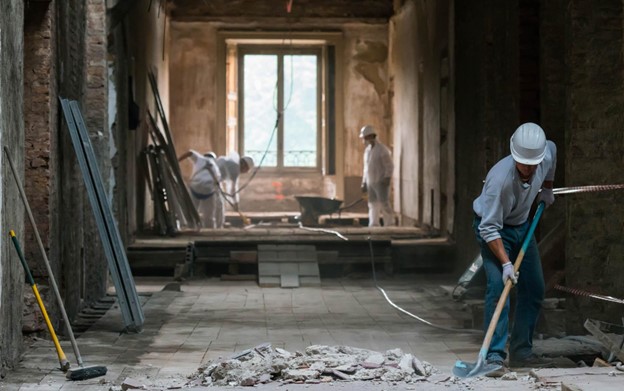Experiencing a fire can be traumatic and stressful. Fire damage affects not only your property’s visible structure but also its integrity and safety. Property owners often wonder when to start the restoration process. Starting fire damage restoration as soon as possible minimizes damage, ensures safety, and prevents further issues.
Professional restoration services help you recover quickly and effectively, returning your property to its pre-fire condition. They guide you through the complex process, alleviating stress and uncertainty, and ensuring a smooth transition back to normal life.
Why Timing Matters in Fire Damage Restoration
After a fire, timing is everything. The sooner you start the fire damage restoration process, the better chance you have of saving your belongings and preventing further damage. Delaying cleanup allows soot and smoke to permanently stain surfaces, metal to rust, wood to warp or rot, and mold to grow in areas where water was used to extinguish the fire. Quick action can also salvage seemingly ruined items and expedite your return to normal life.
That’s why it’s important to partner with a professional fire damage restoration company like DRYmedic Restoration Services, which specializes in swiftly and effectively restoring properties to their pre-fire condition, whether it’s reopening your business or rebuilding your home. By acting swiftly and hiring experts, you can minimize stress, ensure safety, and restore your property to its original state.
When Should You Begin Fire Damage Restoration?
Generally, you should initiate the process as soon as you’ve been given clearance by local authorities that it is safe to enter the property. But Here are some key moments to watch for:
1. Immediately After Firefighters Leave
Call a professional fire restoration service as soon as the fire department says it’s safe to enter your property. Acting fast prevents more damage, as smoke and soot can stain surfaces and cause bad smells. Water from fire hoses can also lead to mold growth within 24-48 hours. Quick action helps avoid these issues.
2. After Ensuring Safety
Safety is always the top priority after a fire. Once the property is cleared for entry, you should still proceed with caution. Firefighters may have used water or foam to put out the flames, which can create slippery surfaces. Additionally, the structural integrity of the building may be compromised. Only enter if it’s safe to do so, and avoid handling any damaged items or areas before professional help arrives.
3. When You’ve Documented the Damage
Before starting fire damage restoration, document the damage for your insurance company by taking photos and videos of all affected areas, including visible fire damage and water damage from firefighting efforts. This evidence is necessary for your insurance claim, providing proof of damage before cleanup and restoration.
Professional restoration companies often assist with this step, ensuring you capture all the necessary information for your insurance company.

What Happens During the Fire Damage Restoration Process?
The fire damage restoration process involves several key steps, each designed to return your property to its pre-fire condition as efficiently as possible. Working with a professional service ensures the job is done safely, thoroughly, and in compliance with local regulations.
Here’s an overview of the main steps:
1. Damage Assessment and Inspection
Once you’ve contacted a restoration company, the first step they will take is to conduct a thorough assessment of your property. This involves inspecting the fire, smoke, and water damage to determine the extent of the destruction. This assessment is important in creating a detailed plan for the restoration process and gives you a clearer idea of what repairs and replacements will be needed.
2. Board-Up and Tarping
If windows, walls, or the roof were damaged during the fire, it’s essential to secure the property to prevent further damage from weather conditions or unauthorized entry. The restoration team will board up broken windows and place tarps over holes in the roof to protect the interior of the building.
3. Water Removal and Drying
In many cases, fire damage is accompanied by water damage from firefighting efforts. If left untreated, standing water can lead to mold growth and additional structural damage. Restoration professionals use industrial-grade pumps, dehumidifiers, and air movers to remove water from your property and dry out affected areas.
4. Smoke and Soot Removal
Smoke and soot can cause extensive damage if not properly cleaned. These substances are not only unsightly, but they also produce lingering odors and can be hazardous to your health. Restoration experts use specialized equipment and techniques to remove soot from walls, ceilings, and other surfaces, as well as eliminate the odor of smoke.
5. Cleaning and Sanitizing
Once smoke and soot are removed, the next step is to clean and sanitize the affected areas. This includes cleaning furniture, personal belongings, and other salvageable items. Many restoration companies offer content restoration services, where they clean and restore your possessions offsite, and then return them once the property has been restored.
6. Restoration and Repairs
The final restoration stage involves repairing and rebuilding your property, ranging from minor repairs to extensive construction. Restoration companies work efficiently to restore your property, understanding the emotional toll of a fire. They aim to bring your home or business back to its original state, minimizing disruption and ensuring a swift recovery.
Conclusion
Dealing with fire damage can be overwhelming, but quick action helps. After a fire, wait for the fire department’s clearance before re-entry. Notify your insurance company immediately. Once safe, start restoration within 24-48 hours. Consider hiring professionals for the best and safest results. Immediate action and expert help can restore your property and get you moving forward.

Recent Comments